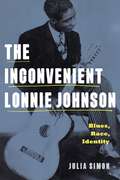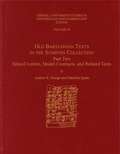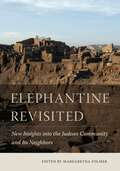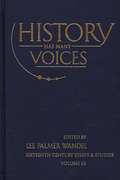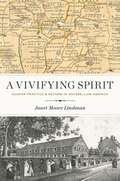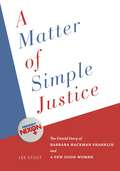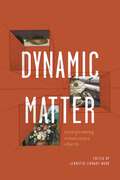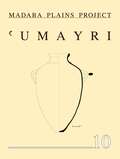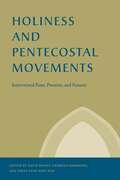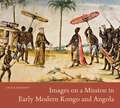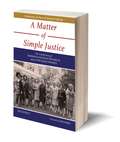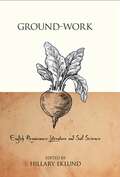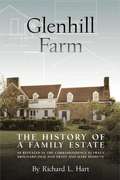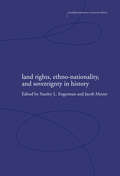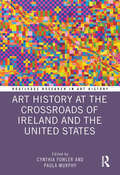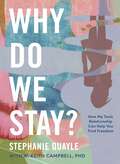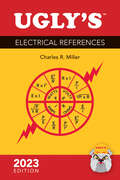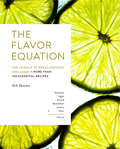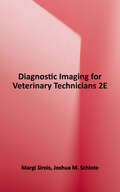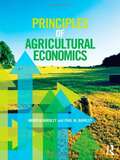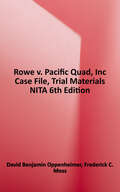- Table View
- List View
The Inconvenient Lonnie Johnson: Blues, Race, Identity (American Music History)
by Julia SimonLonnie Johnson is a blues legend. His virtuosity on the blues guitar is second to none, and his influence on artists from T-Bone Walker and B. B. King to Eric Clapton is well established. Yet Johnson mastered multiple instruments. He recorded with jazz icons such as Duke Ellington and Louis Armstrong, and he played vaudeville music, ballads, and popular songs.In this book, Julia Simon takes a closer look at Johnson’s musical legacy. Considering the full body of his work, Simon presents detailed analyses of Johnson’s music—his lyrics, technique, and styles—with particular attention to its sociohistorical context. Born in 1894 in New Orleans, Johnson's early experiences were shaped by French colonial understandings of race that challenge the Black-white binary. His performances call into question not only conventional understandings of race but also fixed notions of identity. Johnson was able to cross generic, stylistic, and other boundaries almost effortlessly, displaying astonishing adaptability across a corpus of music produced over six decades. Simon introduces us to a musical innovator and a performer keenly aware of his audience and the social categories of race, class, and gender that conditioned the music of his time. Lonnie Johnson’s music challenges us to think about not only what we recognize and value in “the blues” but also what we leave unexamined, cannot account for, or choose not to hear. The Inconvenient Lonnie Johnson provides a reassessment of Johnson’s musical legacy and complicates basic assumptions about the blues, its production, and its reception.
Tablets from the Iri-saĝrig Archive (CUSAS)
by Marcel Sigrist Tohru OzakiWhile each of the previously known archives from the Third Dynasty of Ur has provided distinct views of Sumerian society, those from Iri-Saĝrig present an extraordinary range of new sources, depicting a cosmopolitan Sumerian/Akkadian city unlike any other from this period. In this publication, Marcel Sigrist and Tohru Ozaki present more than two thousand newly identified tablets, mostly from Iri-Saĝrig. This unique and extensive corpus elucidates the importance that Iri-Saĝrig represented politically, militarily, and culturally in Sumer.Although these tablets were not able to be cleaned, baked, or photographed, the authors’ transliterations are based on the original tablets, often after repeated collations. Moreover, access to so many well-preserved tablets made it possible to improve upon the readings and interpretations offered in previous publications. Volume 1 contains a catalog and classification of the texts by provenance, a list of month names and year formulas, another of inscriptions, a chronological listing of the texts, and extensive indexes of personal names, deities, toponyms, and selected words and phrases. Volume 2 presents the texts in transliteration with substantial commentary.This two-volume publication preserves and makes available to the scholarly community a significant segment of Iraq’s cultural legacy that otherwise might have been ignored or even lost. It will augment and enhance our understanding of the unique civilization of Mesopotamia in the late third millennium BCE.
Elephantine Revisited: New Insights into the Judean Community and Its Neighbors
by Margaretha FolmerThe Judean community at Elephantine has long fascinated historians of the Persian period. This book, with its stellar assemblage of important scholarly voices, provides substantive new insights and approaches that will advance the study of this well-known but not entirely understood community from fifth-century BCE Egypt. Since Bezalel Porten’s pioneering Archives from Elephantine, published in 1968, the discourse on the subject of the community of Elephantine during the Persian period has changed considerably, due to new data from excavations, the discovery and publication of previously unknown texts, and original scholarly insights and avenues of inquiry. Running the gamut from archaeological to linguistic investigations and encompassing legal, literary, religious, and other aspects of life in this Judean community, this volume stands at a crossroads of research that extends from Hebrew Bible studies to the history of early Jewish communities. It also features fourteen new Aramaic ostraca from Aswan. The volume will appeal to students and scholars of the Hebrew Bible and ancient Judaism, as well as to a wider audience of Egyptologists, Semitists, and specialists in ancient Near Eastern studies. In addition to the editor, the contributors to this volume include Annalisa Azzoni, Bob Becking, Alejandro F. Botta, Lester L. Grabbe, Ingo Kottsieper, Reinhard G. Kratz, André Lemaire, Hélène Nutkowicz, Beatrice von Pilgrim, Cornelius von Pilgrim, Bezalel Porten, Ada Yardeni, and Ran Zadok. Moreover, a video recording of an interview conducted with Porten on his long career in Elephantine studies accompanies the book through a link on the Eisenbrauns website.
History Has Many Voices (Sixteenth Century Essays & Studies #63)
by Lee Palmer WandelThis volume presents essays from eight scholars who trained with Robert Kingdon, a vanguard of early modern studies. He required students to go to primary sources, yet they were free to pursue their own curiosity. No matter what their approach to the sources, students were held to a high standard of thoroughness, precision, and attention to detail. This festschrift displays something of the diversity of language, source materials, methods, and visions that Kingdon encouraged in his students during his forty-year career in graduate education.
A Vivifying Spirit: Quaker Practice and Reform in Antebellum America
by Janet Moore LindmanAmerican Quakerism changed dramatically in the antebellum era owing to both internal and external forces, including schism, industrialization, western migration, and reform activism. With the “Great Separation” of the 1820s and subsequent divisions during the 1840s and 1850s, new Quaker sects emerged. Some maintained the quietism of the previous era; others became more austere; still others were heavily influenced by American evangelicalism and integration into modern culture. Examining this increasing complexity and highlighting a vital religiosity driven by deeply held convictions, Janet Moore Lindman focuses on the Friends of the mid-Atlantic and the Delaware Valley to explore how Friends’ piety affected their actions—not only in the evolution of religious practice and belief but also in response to a changing social and political context. Her analysis demonstrates how these Friends’ practical approach to piety embodied spiritual ideals that reformulated their religion and aided their participation in a burgeoning American republic.Based on extensive archival research, this book sheds new light on both the evolution of Quaker spiritual practice and the history of antebellum reform movements. It will be of interest to scholars and students of early American history, religious studies, and Quaker studies as well as general readers interested in the history of the Society of Friends.
Destroyed—Disappeared—Lost—Never Were (ICMA Books | Viewpoints)
by Beate Fricke and Aden KumlerTo write about works that cannot be sensually perceived involves considerable strain. Absent the object, art historians must stretch their methods to, or even past, the breaking point. This concise volume addresses the problems inherent in studying medieval works of art, artifacts, and monuments that have disappeared, have been destroyed, or perhaps never existed in the first place.The contributors to this volume are confronted with the full expanse of what they cannot see, handle, or know. Connecting object histories, the anthropology of images, and historiography, they seek to understand how people have made sense of the past by examining objects, images, and architectural and urban spaces. Intersecting these approaches is a deep current of reflection upon the theorization of historical analysis and the ways in which the past is inscribed into layers of evidence that are only ever revealed in the historian’s present tense.Highly original and theoretically sophisticated, this volume will stimulate debate among art historians about the critical practices used to confront the formative presence of destruction, loss, obscurity, and existential uncertainty within the history of art and the study of historical material and visual cultures.In addition to the editors, the contributors to this volume are Michele Bacci, Claudia Brittenham, Sonja Drimmer, Jaś Elsner, Peter Geimer, Danielle B. Joyner, Kristopher W. Kersey, Lena Liepe, Meekyung MacMurdie, and Michelle McCoy.
A Matter of Simple Justice: The Untold Story of Barbara Hackman Franklin and a Few Good Women
by Lee StoutIn August 1972, Newsweek proclaimed that “the person in Washington who has done the most for the women’s movement may be Richard Nixon.” Today, opinions of the Nixon administration are strongly colored by foreign policy successes and the Watergate debacle. Its accomplishments in advancing the role of women in government have been largely forgotten. Based on the “A Few Good Women” oral history project at the Penn State University Libraries, A Matter of Simple Justice illuminates the administration’s groundbreaking efforts to expand the role of women—and the long-term consequences for women in the American workplace. At the forefront of these efforts was Barbara Hackman Franklin, a staff assistant to the president who was hired to recruit more women into the upper levels of the federal government. Franklin, at the direction of President Nixon, White House counselor Robert Finch, and personnel director Fred Malek, became the administration’s de facto spokesperson on women’s issues. She helped bring more than one hundred women into executive positions in the government and created a talent bank of more than a thousand names of qualified women. The Nixon administration expanded the numbers of women on presidential commissions and boards, changed civil service rules to open thousands more federal jobs to women, and expanded enforcement of antidiscrimination laws to include gender discrimination. Also during this time, Congress approved the Equal Rights Amendment and Nixon signed Title IX of the Education Amendments into law. The story of Barbara Hackman Franklin and those “few good women” shows how the advances that were made in this time by a Republican presidency both reflected the national debate over the role of women in society and took major steps toward equality in the workplace for women.
Dynamic Matter: Transforming Renaissance Objects (Cultural Inquiries in English Literature, 1400–1700)
by Jennifer Linhart WoodDynamic Matter investigates the life histories of Renaissance objects. Eschewing the critical tendency to study how objects relate to human needs and desires, this work foregrounds the objects themselves, demonstrating their potential to transform their environments as they travel across time and space.Integrating early modern material theories with recent critical approaches in Actor-Network Theory and object-oriented ontology, this volume extends Aristotle’s theory of dynameos—which conceptualizes matter as potentiality—and applies it to objects featured in early modern texts such as Edmund Spenser’s The Faerie Queene, Robert Hooke’s Micrographia, and William Shakespeare’s The Tempest. Individual chapters explore the dynameos of matter by examining its manifestations in particular forms: combs are inscribed with words and brushed through human hair; feathers are incorporated into garments and artwork; Prince Rupert’s glasswork drops explode; a whale becomes animated by the power of a magical bracelet; and books are drowned. These case studies highlight the potentiality matter itself possesses and that which it activates in other matter. A theorization of objects grounded in Renaissance materialist thought, Dynamic Matter examines the richness of things themselves; the larger, multiple, and changing networks in which things circulate; and the networks created by these transformative objects.In addition to the editor, the contributors to this volume include Anna Riehl Bertolet, Erika Mary Boeckeler, Naomi Howell, Emily E. F. Philbrick, Josie Schoel, Maria Shmygol, Edward McLean Test, Abbie Weinberg, and Sarah F. Williams.
The 2006 Season at Tall al-‘Umayri and Subsequent Studies (Madaba Plains Project)
by Larry G. Herr, Douglas R. Clark, Lawrence T. Geraty and Monique D. VincentThis volume is the tenth in a series of technical seasonal reports on the excavations of Tall al-ʿUmayri, Jordan, part of the Madaba Plains Project. It covers artifactual finds and related research from excavation fields active during the 2006 season: Field A, the western citadel with Early Iron Age domestic structures; Field B, the western defenses and northwestern domestic quarters showcasing a rare Late Bronze Age temple/palace complex; Field H, the southwestern acropolis boasting a Late Iron I courtyard sanctuary; and Field L, the southern edge with Iron I remains, limited Late Iron II architecture, and the now fully exposed area of a Late Hellenistic agricultural complex. This volume includes an important synthesis of the long-term data on repeating cycles of abatement and intensification of settlement population patterns, and the chapters are supplemented by an article on sherds with incised marks and another on coins found at ʿUmayri in 2006.In addition to the editors, the contributors to this volume include Robert D. Bates, David R. Berge, John W. Betlyon, Kent V. Bramlett, David C. Hopkins, and Gloria A. London.
Holiness and Pentecostal Movements: Intertwined Pasts, Presents, and Futures (Studies in the Holiness and Pentecostal Movements)
by David Bundy, Geordan Hammond, and David Sang-Ehil HanSince the 1830s, Holiness and Pentecostal movements have had a significant influence on many Christian churches, and they have been a central force in producing what is known today as World Christianity. This book demonstrates the advantages of analyzing them in relation to one another.The Salvation Army, the Church of the Nazarene, the Wesleyan Church, and the Free Methodist Church identify strongly with the Holiness Movement. The Assemblies of God and the Pentecostal Assemblies of the World identify just as strongly with the Pentecostal Movement. Complicating matters, denominations such as the Church of God (Cleveland), the International Holiness Pentecostal Church, and the Church of God in Christ have harmonized Holiness and Pentecostalism. This book, the first in the new series Studies in the Holiness and Pentecostal Movements, examines these complex relationships in a multidisciplinary fashion. Building on previous scholarship, the contributors provide new ways of understanding the relationships, influences, and circulation of ideas among these movements in the United States, the United Kingdom, India, and Southeast and East Asia.In addition to the editors, the contributors are Kimberly Ervin Alexander, Insik Choi, Robert A. Danielson, Chris E. W. Green, Henry H. Knight III, Frank D. Macchia, Luther Oconer, Cheryl J. Sanders, and Daniel Woods.
Images on a Mission in Early Modern Kongo and Angola
by Cécile FromontEarly modern central Africa comes to life in an extraordinary atlas of vivid watercolors and drawings that Italian Capuchin Franciscans, veterans of Kongo and Angola missions, composed between 1650 and 1750 for the training of future missionaries. These “practical guides” present the intricacies of the natural, social, and religious environment of seventeenth- and eighteenth-century west-central Africa and outline the primarily visual catechization methods the friars devised for the region. Images on a Mission in Early Modern Kongo and Angola brings this overlooked visual corpus to public and scholarly attention.This beautifully illustrated book includes full-color reproductions of all the images in the atlas, in conjunction with rarely seen related material gathered from collections and archives around the world. Taking a bold new approach to the study of early modern global interactions, art historian Cécile Fromont demonstrates how visual creations such as the Capuchin vignettes, though European in form and crafstmanship, emerged not from a single perspective but rather from cross-cultural interaction. Fromont models a fresh way to think about images created across cultures, highlighting the formative role that cultural encounter itself played in their conception, execution, and modes of operation.Centering Africa and Africans, and with ramifications on four continents, Fromont’s decolonial history profoundly transforms our understanding of the early modern world. It will be of substantial interest to specialists in early modern studies, art history, and religion.
A Matter of Simple Justice: The Untold Story of Barbara Hackman Franklin and a Few Good Women
by Lee StoutIn August 1972, Newsweek proclaimed that “the person in Washington who has done the most for the women’s movement may be Richard Nixon.” Today, opinions of the Nixon administration are strongly colored by foreign policy successes and the Watergate debacle. Its accomplishments in advancing the role of women in government have been largely forgotten. Based on the “A Few Good Women” oral history project at the Penn State University Libraries, A Matter of Simple Justice illuminates the administration’s groundbreaking efforts to expand the role of women—and the long-term consequences for women in the American workplace. At the forefront of these efforts was Barbara Hackman Franklin, a staff assistant to the president who was hired to recruit more women into the upper levels of the federal government. Franklin, at the direction of President Nixon, White House counselor Robert Finch, and personnel director Fred Malek, became the administration’s de facto spokesperson on women’s issues. She helped bring more than one hundred women into executive positions in the government and created a talent bank of more than a thousand names of qualified women. The Nixon administration expanded the numbers of women on presidential commissions and boards, changed civil service rules to open thousands more federal jobs to women, and expanded enforcement of antidiscrimination laws to include gender discrimination. Also during this time, Congress approved the Equal Rights Amendment and Nixon signed Title IX of the Education Amendments into law. Featuring a new forward by Sara Eisen, this updated edition of A Matter of Simple Justice celebrates the 100th anniversary of women’s suffrage in the United States through the story of Barbara Hackman Franklin and those “few good women” and shows how the advances that were made in this time by a Republican presidency both reflected the national debate over the role of women in society and took major steps toward equality in the workplace for women.
Ground-Work: English Renaissance Literature and Soil Science (Medieval & Renaissance Literary Studies)
by Hillary EklundHow does soil, as an ecological element, shape culture? With the sixteenth-century shift in England from an agrarian economy to a trade economy, what changes do we see in representations of soil as reflected in the language and stories during that time? This collection brings focused scholarly attention to conceptions of soil in the early modern period, both as a symbol and as a feature of the physical world, aiming to correct faulty assumptions that cloud our understanding of early modern ecological thought: that natural resources were then poorly understood and recklessly managed, and that cultural practices developed in an adversarial relationship with natural processes. Moreover, these essays elucidate the links between humans and the lands they inhabit, both then and now.
Glenhill Farm: The History of a Family Estate, as Revealed in the Correspondence Between Brognard Okie and Ernst and Mary Behrend
by Richard L. HartBy 1930, having developed a highly successful business, the innovative paper manufacturer Ernst Behrend and his wife Mary purchased a number of existing houses and farms to give them sufficient acreage to create a large estate. In 1948 this property became a campus of Penn State University. Known as Penn State Behrend, to this day it retains the original buildings at the historic center of the campus.Based on archival materials, including copious letters between the Behrends and their Philadelphia architect, R. Brognard Okie, this book recounts the planning and development of a unique residence as the country headed into the Great Depression. Letters between the key figures give the reader a glimpse into their thoughts and concerns, including the selection of an architect, the choice of an architectural style, issues involved in planning the estate, and the features and design of the buildings that were constructed or modified. Vintage and modern photographs help convey the nature of the buildings that Okie designed as well as a sense of the Behrends’ lifestyle in the 1930s.An absorbing microhistory of what is now Behrend College, Glenhill Farm provides a window onto a period when new money from industry supported lavish lifestyles, and it reveals how this particular project, conceived and constructed during the Great Depression, was affected by its extraordinary economic circumstances.
Walkin' Preacher of the Ozarks
by Guy HowardGuy Howard's story is no echo of any other preacher’s autobiography--he is known to thousands of mountain people in northern Arkansas and southern Missouri as the Walkin' Preacher of the Ozarks. For the past ten years, Mr. Howard has walked an average of four thousand miles a year; his salary has averaged fourteen dollars a month. He has served dozens of pastorless communities in the Ozark area as pastor, teacher, music director, confessor and general advisor on matters of every description. Without thought of recompense, distance, or dangers, he is at the beck and call of these mountain people all hours of day and night. “Lavin’ away gran’pappy," taking the place of the proverbial shotgun, revival meetings, building the schoolhouse--these and other homespun stories are told with engaging candor and portrayed with forceful simplicity, honest religion, and against a setting about which most Americans know little.
Land Rights, Ethno-nationality and Sovereignty in History (Routledge Explorations in Economic History)
by Stanley L. Engerman Jacob MetzerThe complex relationships between ethno-nationality, rights to land, and territorial sovereignty have long fed disputes over territorial control and landed rights between different nations, ethnicities, and religions. These disputes raise a number of interesting issues related to the nature of land regimes and to their economic and political implications.The studies drawn together in this key volume explore these and related issues for a broad variety of countries and times. They illuminate the diverse causes of ethno-national land disputes, and the different forms of adjustment and accommodation to the power differences between the contesting groups. This is done within a framework outlined by the editors in their analytical overview, which offers contours for comparative examinations of such disputes, past and present.Providing conceptual and factual analyses of comparative nature and wealth of empirical material (both historical and contemporary), this book will appeal to economic historians, economists, political scientists, sociologists, anthropologists and all scholars interested in issues concerning ethno-nationality and land rights in historical perspective.
Art History at the Crossroads of Ireland and the United States (Routledge Research in Art History)
by Cynthia Fowler Paula MurphyTaking the visual arts as its focus, this anthology explores aspects of cultural exchange between Ireland and the United States. Art historians from both sides of the Atlantic examine the work of artists, art critics and art promoters. Through a close study of selected paintings and sculptures, photography and exhibitions from the nineteenth century to the present, the depth of the relationship between the two countries, as well as its complexity, is revealed. The book is intended for all who are interested in Irish/American interconnectedness and will be of particular interest to scholars and students of art history, visual culture, history, Irish studies and American studies.
Why Do We Stay?: How My Toxic Relationship Can Help You Find Freedom
by Stephanie QuayleYou or someone you love may be in a toxic relationship, but it doesn't have to stay that way. In this compassionate and practical resource, Stephanie Quayle shares her powerful story alongside psychologist Dr. W. Keith Campbell's professional insights to give you the help and hope you need—and remind you that you are not alone.When Stephanie lost her boyfriend in a plane crash, she faced intense grief and pain. Nothing compared, though, to the shock of discovering she had not been the only woman in his life. As her world unraveled around her, Stephanie realized that it had actually been unraveling from the start of their relationship—back when he promised her everything.In Why Do We Stay? Stephanie draws on her story to explain how to spot a toxic relationship, how to get out, and how to heal. Mental health expert Dr. W. Keith Campbell joins her in helping you see that:You can make a change in your lifeThere are warning signs to look for and ways to spot an unhealthy relationshipYou don&’t have to be a victim to narcissism or gaslighting or lose years of your lifeWhether you stay in or leave your relationship, healing and freedom are possible Why Do We Stay? is ideal for:Those who feel trapped in an unhealthy relationshipThose who are recovering from a toxic relationshipReaders searching for a resource—for themselves or for a friend—on narcissism, gaslighting, compulsive lying, and other destructive behaviors With a powerful blend of clinical research, gripping storytelling, and unvarnished hope, Why Do We Stay? empowers you to make changes in your life. You are not alone.Discover a way forward.
Ugly’s Electrical References, 2023 Edition
by Charles R. MillerUgly’s Electrical References, 2023 Edition is the gold standard on-the-job reference tool of choice for electrical industry professionals. Offering the most pertinent, up-to-date information used by electricians, including: updated NEC code and table change information, mathematical formulas, NEMA wiring configurations, conduit bending guide, ampacity and conduit fill information, transformer and control circuit wiring diagrams, and conversion tables.
Myers’ Psychology for the AP® Course
by David G. Myers Elizabeth Yost Hammer C. Nathan DeWallNIMAC-sourced textbook
enVisionMath® Grade 4, Common Core, Reteaching and Practice, Workbook
by Savvas Learning Company LLC.NIMAC-sourced textbook
The Flavor Equation: The Science of Great Cooking Explained in More Than 100 Essential Recipes
by Nik SharmaNamed one of the Best Fall Cookbooks 2020 by The New York Times, Eater, Epicurious, Food & Wine, Forbes, Saveur, Serious Eats, The Smithsonian, The San Francisco Chronicle, The Los Angeles Times, The Boston Globe, The Chicago Tribune, CNN Travel, The Kitchn, Chowhound, NPR, The Art of Eating Longlist 2021 and many more; plus international media attention including The Financial times, The Globe and Mail, The Telegraph, The Guardian, The Independent, The Times (U.K.), Delicious Magazine (U.K.), The Times (Ireland), and Vogue India and winner of The Guild of U.K. Food Writers (General Cookbook). Finalist for the 2021 IACP Cookbook Award."The Flavor Equation" deserves space on the shelf right next to "Salt, Fat, Acid, Heat" as a titan of the how-and-why brigade."– The New Yorker"Deep and illuminating, fresh and highly informative… a most brilliant achievement." – Yotam Ottolenghi"[A] beautiful and intelligent book." – J. Kenji López-Alt, author The Food Lab and Chief Consultant for Serious Eats.comAroma, texture, sound, emotion—these are just a few of the elements that play into our perceptions of flavor. The Flavor Equation demonstrates how to convert approachable spices, herbs, and commonplace pantry items into tasty, simple dishes.In this groundbreaking book, Nik Sharma, scientist, food blogger, and author of the buzz-generating cookbook Season, guides home cooks on an exploration of flavor in more than 100 recipes.• Provides inspiration and knowledge to both home cooks and seasoned chefs• An in-depth exploration into the science of taste• Features Nik Sharma's evocative, trademark photography styleThe Flavor Equation is an accessible guide to elevating elemental ingredients to make delicious dishes that hit all the right notes, every time. Recipes include Brightness: Lemon-Lime Mintade, Saltiness: Roasted Tomato and Tamarind Soup, Sweetness: Honey Turmeric Chicken Kebabs with Pineapple, Savoriness: Blistered Shishito Peppers with Bonito Flakes, and Richness: Coconut Milk Cake.• A global, scientific approach to cooking from bestselling cookbook author Nik Sharma• Dives deep into the most basic of our pantry items—salts, oils, sugars, vinegars, citrus, peppers, and more• Perfect gift for home cooks who want to learn more beyond recipes, those interested in the science of food and flavor, and readers of Lucky Peach, Serious Eats, Indian-Ish, and Koreatown• Add it to the shelf with cookbooks like The Food Lab: Better Home Cooking Through Science by J. Kenji López-Alt; Ottolenghi Flavor: A Cookbook by Yotam Ottolenghi; and Salt, Fat, Acid, Heat: Mastering the Elements of Good Cooking by Samin Nosrat.
Diagnostic Imaging for Veterinary Technicians, 2E
by Margi Sirois Joshua M. SchloteDiagnostic Imaging for Veterinary Technicians is a comprehensive diagnostic imaging textbook, which includes detailed positioning information for radiographic studies in the small animal clinic. The text showcases a systematic approach to the positioning of feline, canine, equine, and exotic animal patients for routine and special radiographic procedures, including dentistry procedures.
Principles Of Agricultural Economics
by Paul W. Barkley Andrew BarkleyThis book showcases the power of economic principles to explain and predict issues and current events in the food, agricultural, agribusiness, international trade, natural resources and other sectors. The result is an agricultural economics textbook that provides students and instructors with a clear, up-to-date, and straightforward approach to learning how a market-based economy functions, and how to use simple economic principles for improved decision making. While the primary focus of the book is on microeconomic aspects, agricultural economics has expanded over recent decades to include issues of macroeconomics, international trade, agribusiness, environmental economics, natural resources, and international development. Hence, these topics are also provided with significant coverage.
Rowe V. Pacific Quad, Inc: Case File, Trial Materials (Nita Ser.)
by David B. Oppenheimer Frederick C. MossIn this deposition skills file, Alice Rowe has brought an action under Title VII of the 1964 Civil Rights Act and the Nita Fair Employment Act (which is identical to the California Fair Employment & Housing Act) for sexual harassment and wrongful discharge against her employer, Pacific Quad, Inc. She asserts that her supervisor, operations manager Stanley Schmit, continually leered at her, made offensive sexually suggestive comments to her, brushed by her to sexually touch her, and, finally, propositioned her during the two weeks she worked for Pacific Quad. She further alleges that the president of Pacific Quad, John Walsh, was informed of the harassment and ratified it. Rowe claims lost wages, medical expenses (psychotherapy), general damages for emotional distress, and punitive damages. Witnesses may be deposed on the issue of liability only or liability and damages. There are three witnesses for the plaintiff and three for the defendant. The plaintiff and defendant versions are self-contained and can be used independently of each other to teach deposition skills. This is the trial version of Rowe v. Pacific Quad, Inc. The deposition and trial files are fully integrated, so that students may use the deposition materials to study deposition practice, using the NITA method, and then go on to study trial practice using the trial materials.
